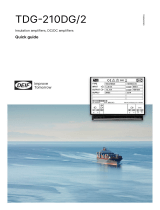
1. General information
1.1 Warnings, legal information and safety.........................................................................................................................................................................4
1.1.1 Warnings and notes.......................................................................................................................................................................................................... 4
1.1.2 Legal information and disclaimer.................................................................................................................................................................................4
1.1.3 Safety issues........................................................................................................................................................................................................................4
1.1.4 Electrostatic discharge awareness............................................................................................................................................................................. 4
1.1.5 Factory settings...................................................................................................................................................................................................................5
1.2 About the Operator's Manual.............................................................................................................................................................................................. 5
1.2.1 General purpose.................................................................................................................................................................................................................5
1.2.2 Intended users.....................................................................................................................................................................................................................5
1.2.3 Contents and overall structure......................................................................................................................................................................................5
2. Display unit
2.1 General.............................................................................................................................................................................................................................................6
2.2 Display (DU-2) layouts.............................................................................................................................................................................................................6
2.2.1 GPC......................................................................................................................................................................................................................................... 6
2.2.2 GPU......................................................................................................................................................................................................................................... 7
2.2.3 GPU Hydro............................................................................................................................................................................................................................8
2.2.4 PPU..........................................................................................................................................................................................................................................9
2.3 Display push-buttons and LEDs..................................................................................................................................................................................... 10
2.3.1 Push-button functions....................................................................................................................................................................................................10
2.3.2 LED functions.................................................................................................................................................................................................................... 11
2.4 Lamp test and dimmer functions....................................................................................................................................................................................12
2.4.1 Lamp test............................................................................................................................................................................................................................ 12
2.4.2 Dimmer function............................................................................................................................................................................................................... 12
2.4.3 AOP-2 lamp test and dimmer function....................................................................................................................................................................13
3. Menu systems and structure
3.1 Display menu systems......................................................................................................................................................................................................... 14
3.2 Menu structure..........................................................................................................................................................................................................................14
3.2.1 Entry window..................................................................................................................................................................................................................... 14
3.2.2 View menu..........................................................................................................................................................................................................................14
3.2.3 View menu navigation....................................................................................................................................................................................................15
3.2.4 Setup menu........................................................................................................................................................................................................................15
3.3 Display texts...............................................................................................................................................................................................................................17
3.3.1 Information texts...............................................................................................................................................................................................................17
3.3.2 Status texts.........................................................................................................................................................................................................................17
3.4 Unit operation modes and password........................................................................................................................................................................... 18
3.4.1 Mode overview..................................................................................................................................................................................................................18
3.4.2 Mode selection..................................................................................................................................................................................................................19
3.4.3 Password............................................................................................................................................................................................................................ 19
4. Alarm handling and log list
4.1 Alarm handling......................................................................................................................................................................................................................... 21
4.2 Log list...........................................................................................................................................................................................................................................21
5. Service menu
5.1 Purpose of the service menu............................................................................................................................................................................................23
5.2 Entry window............................................................................................................................................................................................................................. 23
OPERATOR'S MANUAL 4189340579F UK Page 2 of 26























